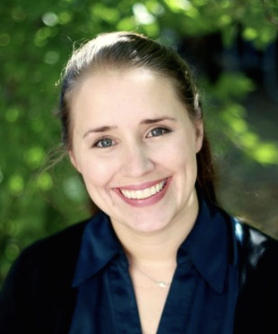Faculty share ideas for fostering interaction in online classes
Author: Dave Roepke
This is an archived story. The content, links and information may have changed since the publication date.
Author: Dave Roepke
Want to know more about improving interactions with students online and in-person? On Aug. 13, check out the Center for Excellence in Learning and Teaching webinar on best practices for effective and meaningful interactions.
Online teaching will be much more prevalent this fall than it was before the coronavirus. With time to prepare, faculty can be more deliberate in their efforts to help students flourish and learn in online courses. Ensuring interaction between students and instructors, an advantage of a class physically meeting, is an important focus.
A memo from the provost's office last month provided some examples of teaching methods that constitute "substantive and regular interaction," a requirement under U.S. Department of Education guidelines -- at least an hour per week for every credit hour. Faculty reflecting on their experiences in the spring and thinking about the fall shared some ideas with Inside Iowa State this summer about how to foster two-way communication with students.
Racheal Ruble had taught online classes before, but the associate teaching professor of psychology in the communication studies program had a challenge this spring that wasn't an issue previously.

Racheal Ruble
"The biggest hurdle for me was that I live out in a rural area and don't have access to continuous internet. I needed to think about that for my students as well," she said.
With that in mind, Ruble's interaction with students was mostly asynchronous, meaning students could engage with learning activities when able. She posted her classroom slides and recorded lecture videos, and students applied what they learned in static small groups, exchanging comments in an online discussion thread. Ruble would monitor the threads to answer questions and make sure students grasped the concepts.
For topics that wouldn't work well for groups, she'd ask students to write a reflection of four to five sentences. She provided feedback on each reflection, though with three courses of 35-40 students per class her comments often would be based on a basic template. The goal was to confirm that students considered and understood the material.
"In class, I'd assume they're doing that as they're listening to the lecture. It gives me an opportunity to see where they're at and where they're struggling," she said.
Another technique that worked well was short announcement videos posted with lectures, a separate recording of 10 minutes or less. Ruble recapped what the class was working on, outlined objectives and assignments for the week, and answered questions. Students welcomed the announcement videos, which she thinks of as similar to the first several minutes of an in-person class period.
"I teach communications classes. They appreciate talking through examples from fellow students," she said.
As a scholar who studies online classes and teaches courses on learning technology, Evrim Baran, an associate professor in the School of Education, was well-prepared to take her three courses online this spring. But emotionally, the uncertainty of the transition was difficult for her students, and for her.

Evrim Baran
It helped to adopt what she calls a "pedagogy of care," an approach that considers individual needs of students. She met one-on-one with students and held group discussions before spring break to ease concerns and collectively identify what interactions would work best.
She reduced the frequency of live class sessions, added collaborative exercises such as online discussion threads with frequent feedback and updated projects that incorporated the COVID-19 crisis to make material relevant. Asynchronous methods common in online learning environments have benefits beyond addressing access issues, Baran said.
"You can do things online you can't do face-to-face. Students are more prone to sharing personal things in an online class. They can think, write and then post. It's not immediate and gives them time and space to reflect," she said. "There are more equal opportunities to participate. In an online discussion, every student writes a response."
The downside is losing the community of an in-person classroom, and Baran said she worked to build that up as much as possible, offering social chat forums for students to connect. Recorded video also can create presence online, which is why she sends out weekly "agenda" videos for online courses and has students record introductory videos.
Going forward, Baran said more preparation is needed so faculty can adjust better to abrupt shifts online. Hybrid-flexible course design, for instance, includes plans for in-person, online and blended hybrid instruction, giving students the choice of how to complete learning objectives.
"I think there will be more and more work in that area," she said.
As part of the Center for Excellence in Learning and Teaching (CELT) preparing future faculty program, which provides graduate students and postdocs teaching training and practice, Clark Coffman was co-teaching a spring class of about 50 with CELT program coordinator Karen Bovenmyer. It's designed on team-based learning concepts, where purposefully selected teams work together during class time. The teams stay the same throughout the semester, and the group problem-solving is crucial, said Coffman, a part-time CELT faculty fellow and associate professor of genetics, development and cell biology.

Clark Coffman
When the course shifted online, breakout rooms in Zoom allowed those teams to maintain instantaneous exchanges. To shape the discussions when the class reconvened as a whole, Coffman needed a sense of what the groups had been talking about. But popping in a virtual breakout room tended to chill discussion. The solution was having groups share an interactive document, such as Microsoft Word online via CyBox. Watching those documents, instructors can monitor group work without impacting it.
"That was our way of eavesdropping. It was really handy," he said.
The method could work for bigger courses, too. Coffman has heard of faculty using it on classes as large as 150. With multiple instructors, it may work with even larger sections, he said.
"It's going to take some creative approaches to make things work in large-format classes," he said.
Coffman said he's pondering how to build team-based learning communities online from scratch, which he suspects will be more difficult than when groups have a head start in forming a community in-person. He's been interested in hearing what colleagues are planning.
"In what ways can we make it so you have a sense of who I am and I have a sense of who you are in groups?" he said. "There's no single answer. Not doing this by yourself is the key."
The students in the six-credit interdisciplinary design studio Alenka Poplin taught in the spring were scheduled to take a spring break tip to Vienna.

Alenka Poplin
"You can not replace a trip to Vienna in any way," said Poplin, an assistant professor of community and regional planning.
But in an intensive studio class, there is much else to replace.
"The concept of a studio is to meet in class. It's built for interaction, being in the class and working together," Poplin said.
It took a wide variety of interactions to fill the gap. The 10-student class, which chose to focus on sustainable mobility and smart cities, collaborated with students from the University of Applied Sciences Technikum Wien in Vienna to incorporate the perspective lost when the trip was canceled and reconnected virtually with local experts who spoke to the class in person earlier in the semester.
The class continued to meet in virtual synchronous sessions, albeit less often. Poplin conducted one-on-one videoconference consultations, conversations that at first ranged far beyond their projects. Though it wasn't for any form of evaluation, classmates and Poplin used a group texting app to connect informally -- whether it was lamenting where they'd be in Austria on that day or seeking Photoshop tips.
"I think a combination works best," she said. "I made myself very available to them. They knew they could reach out whenever they wanted."